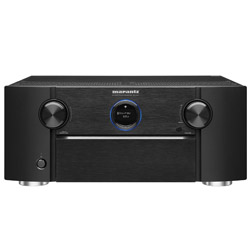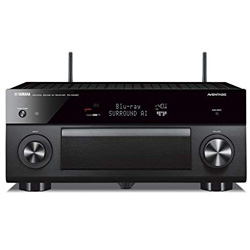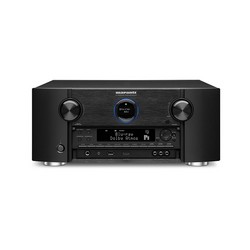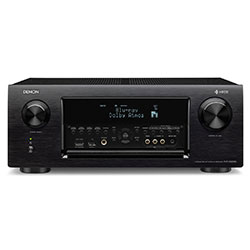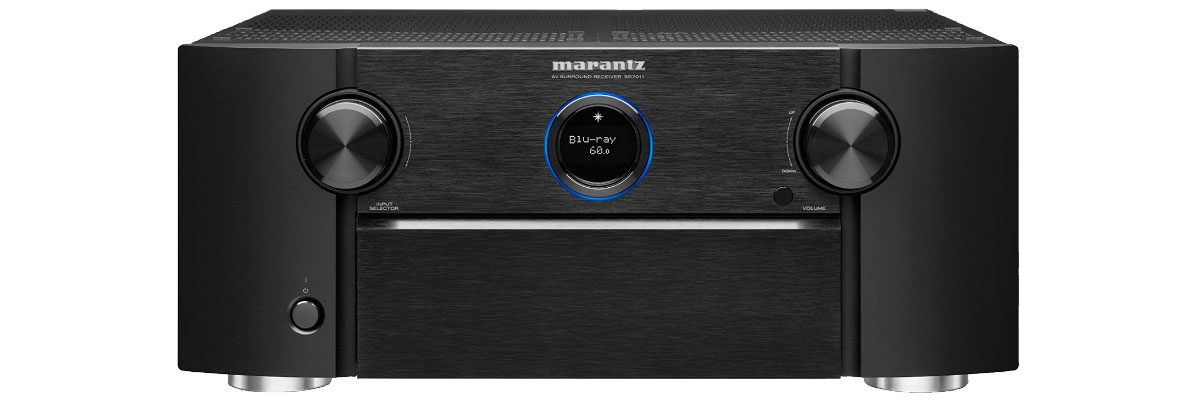 Marantz SR7011 is the flagship AV receiver of the company, created on the basis of the successful previous model SR7010, by combining all the advanced technologies and adding the latest features. Find out what are the Marantz SR7011 specs in this Marantz SR7011 review.
Marantz SR7011 is the flagship AV receiver of the company, created on the basis of the successful previous model SR7010, by combining all the advanced technologies and adding the latest features. Find out what are the Marantz SR7011 specs in this Marantz SR7011 review.
Marantz SR7011 review
Features
The 9.2-channel flagship Marantz SR7011 supports such current 3D audio formats as Dolby Atmos and DTS: X in a 5.1.4-channel configuration, and after a paid software update, another Auro-3D sound format is available. The model is equipped with nine amplifiers with a power of 125 W each (8 Ohms). The Marantz SR7011 AV receiver plays FLAC / FLAC-HD, ALAC, WAV, DSD and other current formats, and is also ready to provide streaming playback of HD audio. In addition to supporting the Dolby Atmos decoder, and DTS: X, Auro 3D after a software upgrade, the technique boasts proprietary technology for automatically adjusting sound for MultEQ XT32 (PRO) rooms, which guarantees an improvement in the three-dimensional scene.
Design and build
The front panel of the Marantz SR7011 is decorated with a round display. The input selector is on the left, and the volume knob is on the right. The second display, control buttons, headphone jack, microphone jack, USB, HDMI input and AV connectors are under the cover. The design uses selected components, discrete HDAM modules and a topology of circuits with current feedback, which guarantees a high slew rate, a wide frequency band with a minimum of distortion and amazing dynamics.

Connectivity
The receiver uses HDMI inputs (8 pcs.) Version 2.0a, working with a resolution of 4K UHD (60 Hz) and supporting HDCP 2.2, HDR, 4: 4: 4 Pure Color downsampling, 3D video, and other functions. The output has three similar connectors (one with a return channel). The model has developed switching, which includes 7.1-channel RCA input, 11.2-channel Pre Out and many other connectors, including MM phono input.
Setup
To calibrate speakers, the Audyssey MultEQ XT32 system with a “platinum kit” is used, which includes Dynamic EQ / Dynamic Volume (optimization of frequency response / signal level), LFC (does not pass bass to adjacent rooms) and Sub EQ HT for working with two subwoofers.
Pros and Cons
Pros
- Wide possibilities of switching and building a multiroom
- Support for three additional audio zones
- Beautifully detailed three-dimensional sound with good power reserve
Cons
- It would have been nice to have XLR connections
Common features
Product
Model
Brand
Reviews
Amplifier
Channels
Stereo power (RMS), W/Ohm
Output impedance, Ohm
Frequency response
THD in stereo, %
Audio features
Digital to analog converter (DAC)
Bi-amping
Pure direct (straight)
Auto speaker calibration
Speaker A/B switching
Other audio features
Connectivity
Wi-Fi
USB
Bluetooth
Ethernet (RJ45)
DLNA
MHL
Streaming services
Apple Music (AirPlay)
Amazon Music
Spotify
Other streaming services
Extensive connection
HDMI input/output
HDMI ARC (Audio Return Channel)
HDMI eARC (Enhanced Audio Return Channel)
HDMI CEC
Digital content protection (HDCP)
Subwoofer output (LFE)
Headphone output
Optical digital input
Coaxial digital input
Composite input
Component input/output
Phono (MM) input
Front panel connectors
Multi channel preamp output
Video features
HDR (High Dynamic Range)
4K signal pass-through
8K signal pass-through
HDMI signal pass-through
3D signal pass-through
HDMI pass-through in standby mode
Video conversion
Analog to HDMI scaling
HDMI to HDMI scaling
Dolby Vision
Other video features
Additional features
Voice control
App control
Display
Tuner
Sleep timer
Auto power off
ECO mode
Graphical user interface (GUI)
Setup assistant
Firmware update
Other additional features
Multi-room
Multi-room zones
Zone audio output
Zone HDMI output
Multi-room control
RS-232
Remote control input/output (IR)
DC trigger output (12V)
Multichannel surround
Dolby Atmos
Dolby TrueHD
Dolby Surround
Dolby (other)
DTS:X
DTS HD Master
DTS Virtual:X
DTS Neural:X
DTS (other)
Auro-3D
IMAX Enhanced
Multichannel stereo
Audio file formats
MP3
WMA
AAC
WAV
FLAC
ALAC
Other audio file formats
Power
Operational power consumption, W
Standby consumption, W
Removable power cord
User manual
Manual
Dimensions
Size W x H x D, cm/inches
Weight, kg/lbs
Other
Release year


